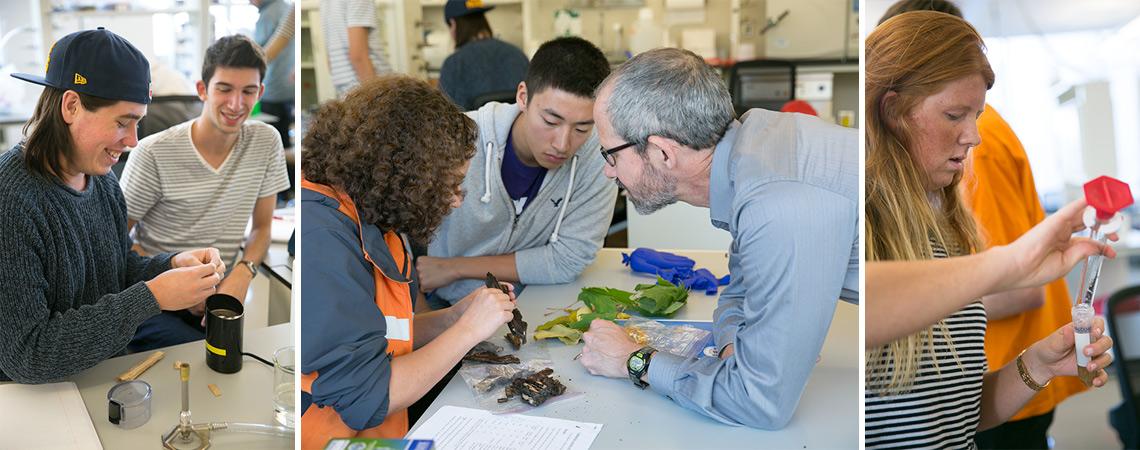
In an article entitled “Cellulose Breakdown: Investigations into making liquid fuel from plant biomass,” GLBRC education and outreach director, John Greenler, coordinator Leith Nye, and the Wisconsin Alumni Research Foundation’s outreach and education manager, Travis Tangen, describe a lab designed to engage students with the real world science of producing liquid fuel alternatives to fossil fuel-derived gasoline.
“The CB2E lab is somewhat unique,” Greenler says, “in that it confronts high school students with the same scientific challenge that currently drives a host of U.S. Department of Energy-funded researchers: how can we sustainably convert biomass to biofuels? The activity’s challenges are real and contemporary, so student buy-in tends to be high.”
The lab directs students to produce fuel from fibrous (or cellulosic) plant materials over the course of six to seven class periods. Using simple, commonly found materials, such as corn stalks, grasses, sawdust, or cardboard, students prepare biomass samples by grinding or boiling, treating the biomass with cellulase enzymes, and then adding yeast to initiate fermentation.
By varying the biomass pretreatments, as well as manipulating enzyme and fermentation reactions, CB2E students also carry out an inquiry process very much in line with the new Next Generation Science Standards (NGSS). NGSS – a set of K-12 science standards developed by a coalition of educational partners, including the National Research Council and the National Science Teachers Association – emphasizes the need for students to plan and carry out investigations in science and engineering that embrace the complexity of real-world science.
“We think CB2E is a powerful way for students to learn,” Greenler says. “The lab cuts across a broad swath of content areas – chemistry, the flow of energy and matter, sustainability – while simultaneously requiring students to put science and engineering practices at the heart of their learning.”
To complement the paper, GLBRC’s Education and Outreach team has posted videos on its activity page that introduce the CB2E lab to teachers. While tailored to the high school chemistry student, the lab is also adaptable to classes in other subject areas, such as environmental science, biology, engineering, and agriculture.
The GLBRC is one of three U.S. Department of Energy Bioenergy Research Centers created to make transformational breakthroughs and build the foundation of new cellulosic biofuels technology. For more information on the GLBRC, visit www.glbrc.org.